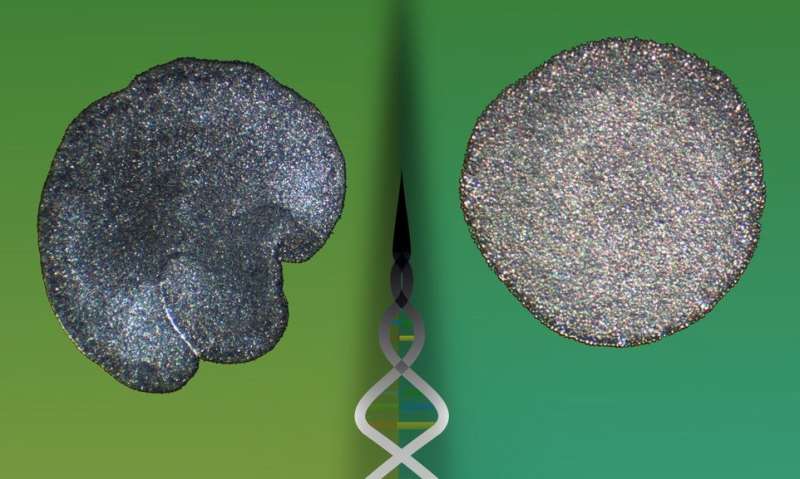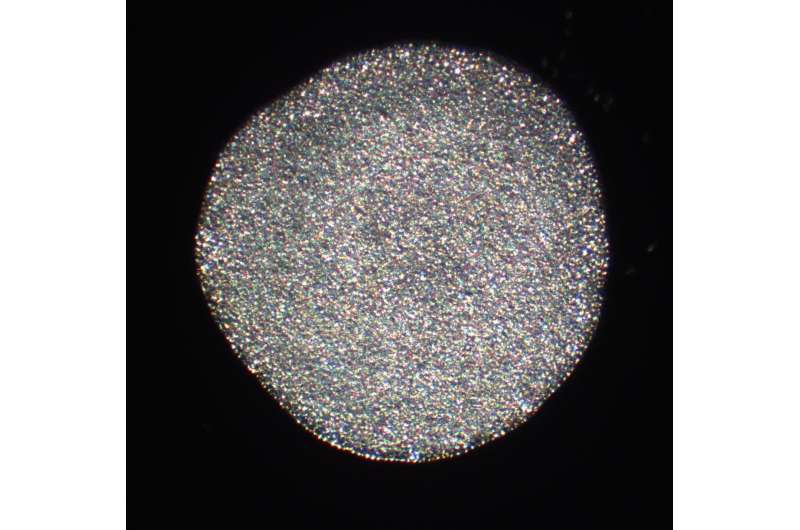The symbolic split of what was previously recognized as a single species into two species and two genera. Credit: Fabian Deister and Hans-Jürgen Osigus
Apparently identical marine animals called placozoans, once thought to all belong to a single species, are revealed by their genomes to in fact belong to different genera, according to a new study publishing on July 31 in the open access journal PLOS Biology by Michael Eitel and Gert Wörheide of Ludwig-Maximilians-Universität (LMU) in Munich, Germany, and colleagues. The genomic approach that they used is likely to be applicable to other groups of very small animals that lack physically distinct characteristics, including mites and nematodes.
Placozoans are one-millimeter-long marine animals found throughout the world in temperate and tropical waters. They have no organized tissues, no neurons, and no left-right symmetry. With no physical features to distinguish different groups, they have until now been classified as a single species, Trichoplax adhaerens. But studies of single genes have revealed significant genetic diversity within different populations of placozoans, suggesting that they may have diverged genetically despite remaining the same morphologically.
To explore that possibility, the authors sequenced the genome of a placozoan lineage called H13, which previous studies showed was distantly related to the so-called H1 lineage, whose nuclear genome has previously been sequenced. They performed a multi-level comparison between the two genomes in a so-called 'taxogenomics' approach, including comparison of the physical location of genes within the chromosomes, analysis of duplicated genes, functional comparisons of sets of genes, and cross-phylum comparison of genetic distances on various taxonomic levels.
They found that rearrangements of the genome were common between H1 and H13, and that gene duplication, which often underlies adaptation to different environments, may have played a significant role in separating the two groups. Based on the degree of genomic difference, the authors propose that H13 be designated Hoilungia hongkongensis, making it the first species in a new genus of placozoans.
Hoilungia hongkongensis. Credit: Hans-Jürgen Osigus, Stiftung Tierärztliche Hochschule Hannover
"The lack of classical morphological differences in the placozoans and other small animals has led to an underappreciation of their taxonomic diversity at the genomic level," Wörheide said. "Our analytic approach is likely to be useful in revealing similar diversity in other taxa which lack morphologically distinguishing characters, such as copepods, rotifers, mites, and nematodes."
More information: Eitel M, Francis WR, Varoqueaux F, Daraspe J, Osigus H-J, Krebs S, et al. (2018) Comparative genomics and the nature of placozoan species. PLoS Biol 16(7): e2005359. doi.org/10.1371/journal.pbio.2005359
Journal information: PLoS Biology
Provided by Public Library of Science
























